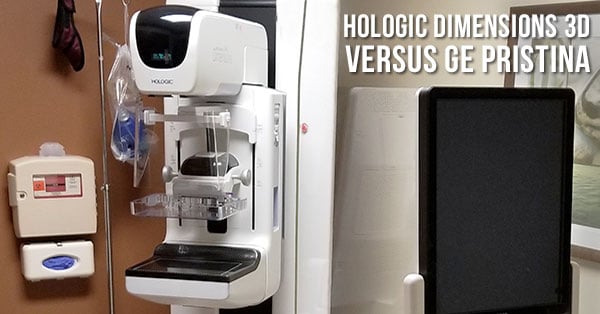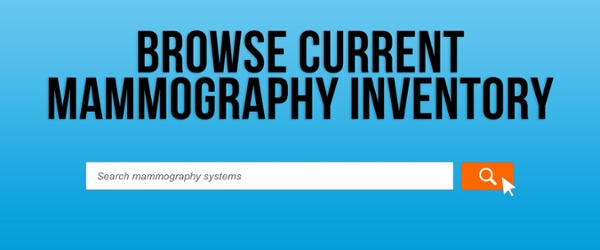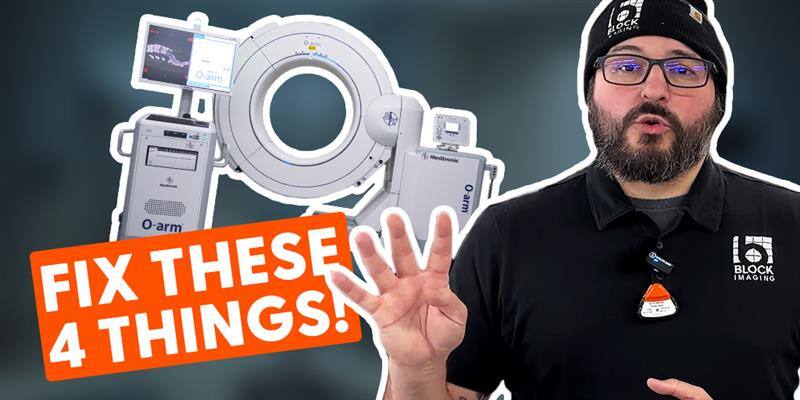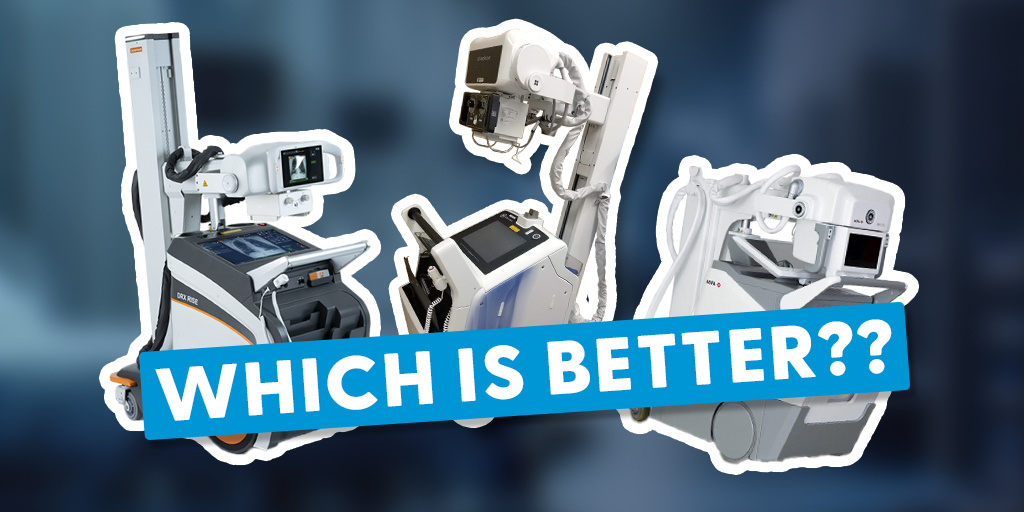
For accuracy, fewer recalls, and clarity in dense breast tissue, 3D mammography is the top of the line. However, those who are looking for top-tier technology like this won't find just one option when they take to the market to find their next system. A number of offerings from Hologic, GE, Siemens, Fuji, and others are available either new or on the secondary market.
To help buyers looking for 3D mammo narrow down their options, we'll compare two options they're likely to come across in their search: the Dimensions 3D from Hologic and the Pristina from GE.
Hologic Dimensions 3D vs. GE Pristina
Image Quality
The image quality of the Dimensions and the Pristina are comparable. Both systems have a standard detector resolution of 100 microns. Hologic systems with their new Clarity HD detector appear to be pulling ahead at 70 microns, but these are not commonly found on the secondary market yet. Both detectors also offer the same 24 x 29 cm imaging area.1
Tomo-Guided Breast Biopsy
Both systems offer tomosynthesis breast biopsy guidance capabilities. The tomo guidance feature makes biopsies easier for physicians to perform and increases their ability to get to masses positioned in the posterior of the breast by eliminating the table thickness of a traditional prone biopsy system.
Tomo-guided biopsies are also more comfortable for patients. If a patient is disabled, injured, or otherwise limited in movement, the flexible positioning of an upright system can accommodate them.
Service
While GE has grown their market share in mammography over the last few years, the behemoth is still Hologic. Hologic has been steadily increasing its 3D install base since 2011, and it has paid off in market penetration. Because of this, Hologic's engineering bandwidth and responsiveness for 3D mammo is unmatched. We aren't saying that GE service is bad, but any other 3D mammo manufacturer is hard-pressed to keep up with Hologic.
Availability
Neither of these systems are available used or refurbished at a level we would call common. No Pristinas have come into our purview. They are still rather new, and their install base is relatively small. Dimensions 3D units are more available, but at what we would call a trickle. Still, those in search of either system on the secondary market are far more likely to find a Dimensions 3D at this point.
Current Price Averages for Popular Digital Mammo Systems
A Note on Self Compression
With the Pristina, GE offers a feature package called “Self Compression”. As the name suggests, the package puts the patient in control of the level of compression on their breast. The idea behind the feature is that the patient will be more comfortable and experience less pain during the procedure if they are "in the driver's seat".
Self Compression has been met with mixed reviews from physicians, however, as some patient's pain tolerance may not measure up to the level of compression that is needed to get an image of sufficient quality. In these cases the results of a screening would be less reliable, if not unusable.
The Takeaway
While the Dimensions 3D and the Pristina are very comparable in image quality and both systems offer 3D tomo-guided biopsy, the sheer lack of availability for the Pristina will preclude most secondary market buyers from owning one in the near future. In the meantime, the Dimensions 3D can be found at a strong value and with a likelihood of more responsive service. Those who have the latitude in their budget to purchase a new system will be well-served by either clinically, but should still mind our note on service responsiveness.
If 3D mammography is on your wishlist, our team would love to talk with you about the Dimensions 3D or any other solution that has caught your eye. To learn more, click the button below tell us how we can help and get pricing information on digital mammo equipment.
1 https://www.itnonline.com/chart/breast-tomosynthesis-systems
2 https://www.accessdata.fda.gov/cdrh_docs/pdf18/K182951.pdf

Jason Block
Jason Block is the Product Manager for Women’s Health Equipment at Block Imaging. Jason loves to help, challenge, and empower people as they make decisions about their medical imaging equipment. When he's not assisting healthcare facilities with their imaging needs, Jason enjoys spending time with his family, coaching multiple sports, and watching the Michigan State Spartans.






